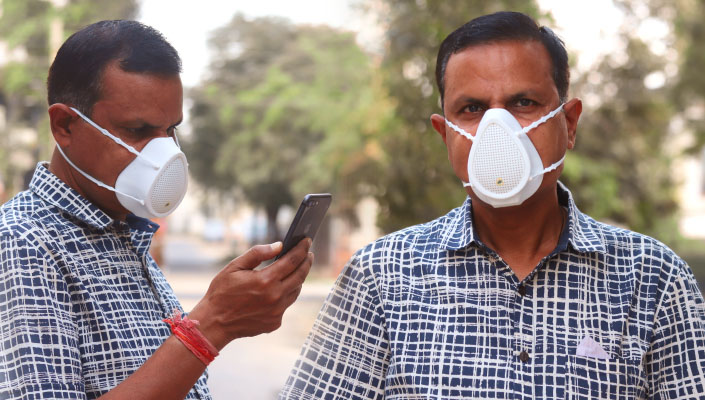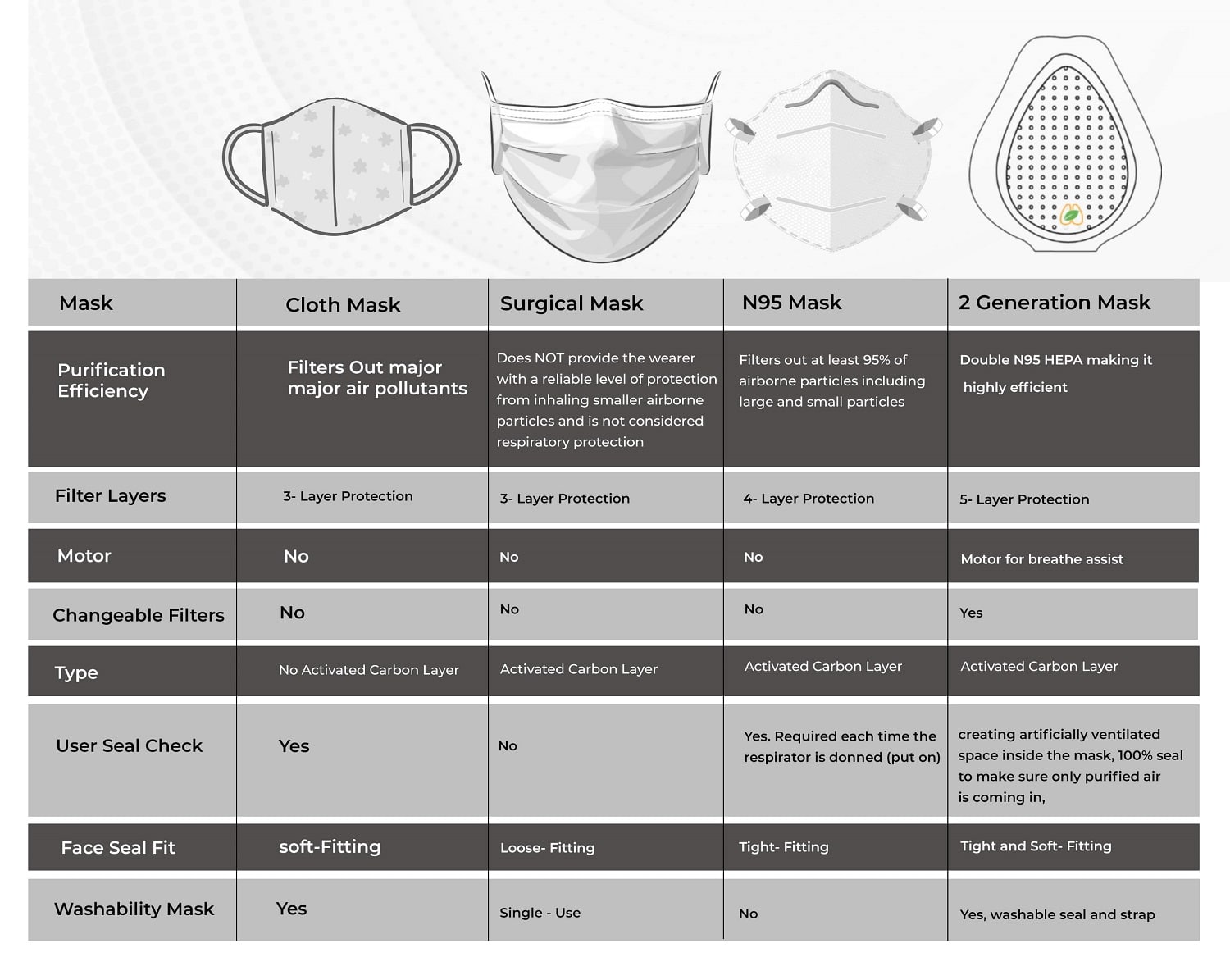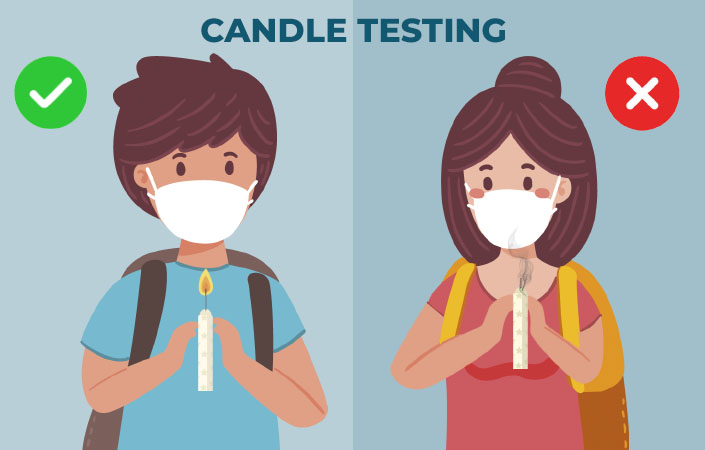Are you still wondering how to find yourself the ‘perfect’ mask for COVID-19? Do you want to which factors you should look out for while selecting a mask? Read more to find out all the essential details about masks and how to test them yourself at home!
COVID-19 and the emerging need for masks
CoViD-19 has brought the world to its knees. One thing that has taken the spotlight during this time of jeopardy is a mask. The mode of transmission of COVID-19 is via infected respiratory droplets. The virus is so tiny that it settles on the water droplets of the cough or sneeze of an infected person. These can stay suspended in the air and travel farther distances. Thus, increasing the risk for people around them. Face masks cover the mouth and nose of the user to reduce their susceptibility to contract the virus. Masks have now taken place as essential in our daily routine.
Therefore, your mask must be efficient enough to keep you safe. During the initial stages of COVID-19 transmission, there was a surge in demand for surgical masks and N95 masks. However, a lot of people are now more inclined towards buying cloth masks or making their DIY masks. But are they safe? Which type of mask offers the best protection? Want to know how can you make sure that you’re wearing the ‘right’ mask?
Parameters to look for, while finding a mask for COVID-19
The type of mask one should opt for depends on factors like age, underlying health conditions, and the nature of work one is doing.
There are three factors on which the efficacy of a mask depends-
Breathability
How effective is a mask if you cannot breathe through it? It is mandatory to test the breathing resistance of the material. Breathable masks are more comfortable to wear, especially for a longer duration of use. Breathability tests measure the level of ease with which we can breathe after wearing the masks. You should never wear a mask that makes it difficult to breathe!
Water Resistance
We can classify materials based on their affinity towards water. They can either attract water (hydrophilic) or repel it (hydrophobic).
Hydrophobic materials like polyester make water bead up on the surface upon exposure. This characteristic makes such materials apt for the outer layer of the mask to avoid interaction from viruses carrying droplets.
One should use hydrophilic materials like cotton to make the innermost layer of the mask because of its absorbing nature. Water spreads out upon interaction with the surface and thus absorbs moisture from breathing.
Filtration
The material should possess high filtration capacities. It will significantly decrease the probability of particles passing through the layers of the mask and exacerbate the difficulty in breathing.
The World Health Organization (WHO) recommends the use of fabric masks for most of the public. It advises medical masks (surgical) for the healthcare workers, COVID patients, and people who fall in the high-risk groups.
How do I assess a surgical mask for COVID-19?
Surgical or Medical masks are suitable for healthcare workers. These are generally single-use, disposable masks with 3-4 layers (most commonly polypropylene).
Surgical masks have to be designed and made as per the standards set by the concerned authority, specific to a country. Healthcare workers can only use those that meet the designated national standards.
For instance, the Bureau of Indian Standards (BIS) is the authority that sets the standards for surgical masks in India. All the masks have to conform to the IS 16289:2014 standard.
Similarly, ASTM F2100-11 standard by the American Society of Testing and Materials specifies the performance requirements for medical masks in America. Europe uses the EN 14683 standard for medical masks, whereas China uses the YY 0469 standard.
So, if you’re buying a surgical mask, always check whether or not it is approved by looking for the label of the standard it follows. Do not buy, if it has got none.
How do I assess a cloth mask for COVID-19?
Fabric or Cloth masks are not conventionally fit for medical uses. However, provided the dire times of the ongoing pandemic, these can be made reasonably protective.
Whether you are buying one or making one, ensure the following check-points:
More layers for better protection
Aim for at least three layers in your mask. Check for a fine weave, dense material, and high thread count. Never choose a mask made with netted or see-through fabric.
Such layers allow aerosols or tiny droplets to pass through voids.
Following are the suggested materials for the three layers of the mask-
-
- Outer layer- Non-absorbent material like polyester or cotton-polyester blend
- Middle layer- Polypropylene
- Inner layer- Absorbent material like cotton
Go for the right fit!
Gaps between the mask can allow unfiltered and contaminated air through the pores. Such masks can render you more vulnerable to COVID-19. Therefore, make sure that the mask fits you well around the face.
A nose-bridge piece is an actual saviour that helps the mask to fit around your face. If the mask is loose-fitting, a nylon stocking over the top will do the trick.
What do we recommend?
We believe that pure air is a necessity. We reflect what we breathe. That’s why we need a mask which does not protect us from Coronavirus but also allows us to do whatever we want, without gasping for breath.
For this, we recommend the Prana Air 2nd Gen Mask which comes with 5-layer protection, including a pre-filter, activated-carbon layer, two layers of HEPA, and a cotton filter. The motorized mask fits well on your face and comes with 3-speed fan operation.

The filters are replaceable and the user can change them very easily on their own!

Comparison of different types of masks.
Testing them at home
Here are four simple tests that you can perform at home to check whether your mask is the ‘right’ choice or not:
For fit
Just wear your mask and check whether there are any open spaces at the nose-bridge or on the cheeks.
Ideally, there should not be any gaps, and the mask should be a perfect fit around the face.
For breathability
Just put on the mask and breathe. You should discontinue using the mask immediately if you face any difficulty in breathing.
But make sure that there are no potential inhalation hazards by ensuring that you clean the fabric first.
For water resistance
Pour 2-3 drops of water over the outer surface of the mask. Make sure that you keep the outer surface of the mask stable.
If the water is absorbed instantly, that will point towards a failure.
If it leads to the formation of a bead, that means your mask has passed the test.
For filtration
One of the world’s most famous science educators, Bill Nye came up with an easy yet effective way to check the filtration of a mask.
All you need is your mask and a candle.

Candle Test for finding the best mask for COVID-19
Just wear your mask and blow some air at a lighted candle. Your mask fails the test if the candle blows out.
If it does not extinguishes, then that mask is perfect for you!
To know more about our range of masks, click here.
This post is also available in:
![]() Global
Global